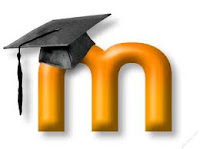A web-based lesson is a lesson based on a Web 2.0 artifact or a lesson where part of the class employs an artifact in order to teach an objective,a lesson or part of it. Nowadays, lessons can insert podcasts, videos and music downloaded from internet, wikis, blogs and other interesting web 2.0 tools like Virtual Life or Second Life in order to foster listening, reading, writing and speaking inside the EFL/ESL classroom.
Web-based lessons are an outstanding experience both for students and facilitators because it´s updated, real and meaningful. It is also well known that students are very familiar with technology but not always are digitally literate. In this case, the facilitator has to master the use of the artifact to be used in class, in such a way that time and effort are worth for the purpose of the lesson. In order to do so, several considerations are to be taken such as technological availability: enough pcs or laptops, fast connection, and all the necessary devices in order to exploit the tool inside and outside the classroom. Wikis, blogs, podcasts, videos, SL and many other Web 2.0 tools are great for designing a web-based lesson. Try the new way of teaching and surprise your students.
 Wikipedia states that, an electronic portfolio, also known as an e-portfolio or digital portfolio, is a collection of electronic evidence assembled and managed by a user, usually on the Web. Such electronic evidence may include inputted text, electronic files, images, multimedia, blog entries, and hyperlinks. E-portfolios are both demonstrations of the user's abilities and platforms for self-expression, and, if they are online, they can be maintained dynamically over time.
Wikipedia states that, an electronic portfolio, also known as an e-portfolio or digital portfolio, is a collection of electronic evidence assembled and managed by a user, usually on the Web. Such electronic evidence may include inputted text, electronic files, images, multimedia, blog entries, and hyperlinks. E-portfolios are both demonstrations of the user's abilities and platforms for self-expression, and, if they are online, they can be maintained dynamically over time. For me, as a teacher and as a post-graduate student, e-portfolios are a way of tracking students´ progress and evolution and also a great way for self-assessment and peer assessment and they can be accessed by different users. Learners can keep every piece of writing, reading, listening and speaking assignments or projects in the form of an artifact on the web and colleagues can go back and forth in order to give feedback, leave comments and suggestions, etc. This is an enriching experience for everyone.
This is my first web-lesson plan which I want to share with you,
My first web-based lesson
This is my first web-lesson plan which I want to share with you,
My first web-based lesson
References:
http://en.wikipedia.org/wiki/Electronic_portfolio
http://net.educause.edu/ir/library/pdf/ELI3001.pdf
References
http://tech.worlded.org/docs/surfing/section5.htm












